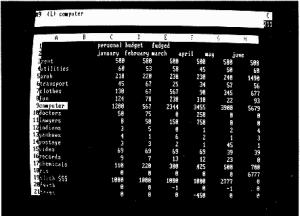I started using a spreadsheet to calculate my fantasy league standings, maybe in 1988. The program was called VP-Planner, and the front end of it was a clone of Lotus 1-2-3, which cost $500 at the time. VP-Planner cost $35, which for a regular guy was plenty.
But the real power and appeal of VP-Planner was it’s ability to access databases, and import specific data into the spreadsheet without a lot of tedious cutting and pasting.
Each week I would download the baseball stats from a sports gambler service in Las Vegas, massage the format to get it set, and click RECALC (F9) on my keyboard. My IBM XT would whirr and purr, and I would go to lunch.
Sometimes, the calculations were complete when I came back, sometimes not.
 My friend Steven Levy reprinted a story he wrote about spreadsheets for Harpers magazine this week at his new online mag, called Backchannel. It’s a fascinating look from a distant perch at the effect of the democratization of data and our ability to model systems quickly and fairly easily.
My friend Steven Levy reprinted a story he wrote about spreadsheets for Harpers magazine this week at his new online mag, called Backchannel. It’s a fascinating look from a distant perch at the effect of the democratization of data and our ability to model systems quickly and fairly easily.
In the middle of the piece he writes: “The computer spreadsheet, like the transcontinental railroad, is more than a means to an end. The spreadsheet embodies, embraces, that end, and ultimately serves to reinforce it. As Marshall McLuhan observed, “We shape our tools and thereafter our tools shape us.” The spreadsheet is a tool, and it is also a world view — reality by the numbers. If the perceptions of those who play a large part in shaping our world are shaped by spreadsheets, it is important that all of us understand what this tool can and cannot do.”
I suspect data journalists like Nate Silver and Ezra Klein could not agree more.
